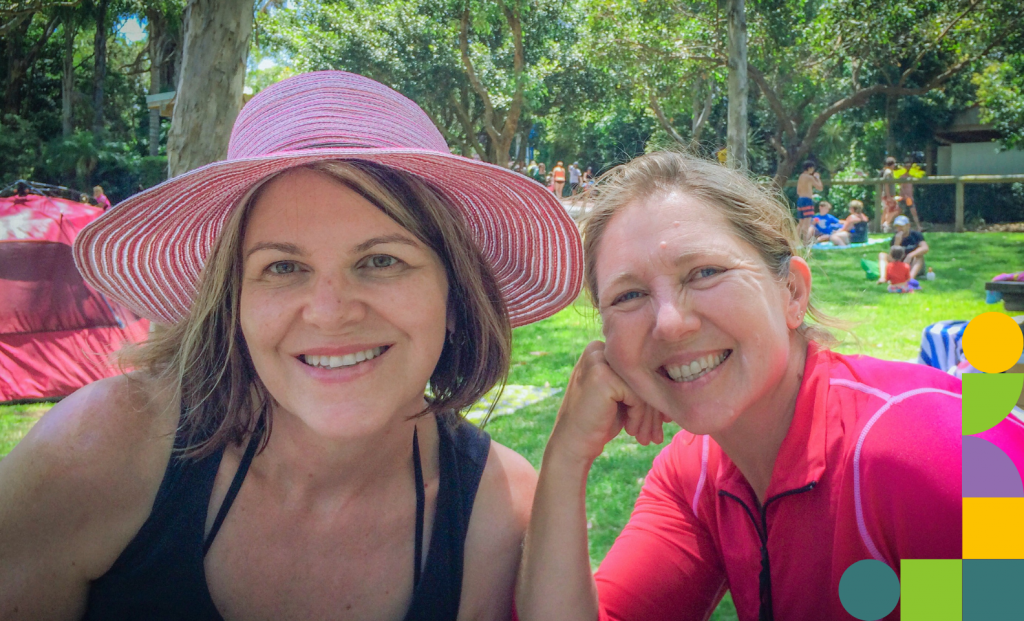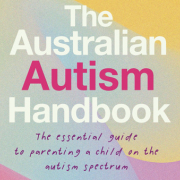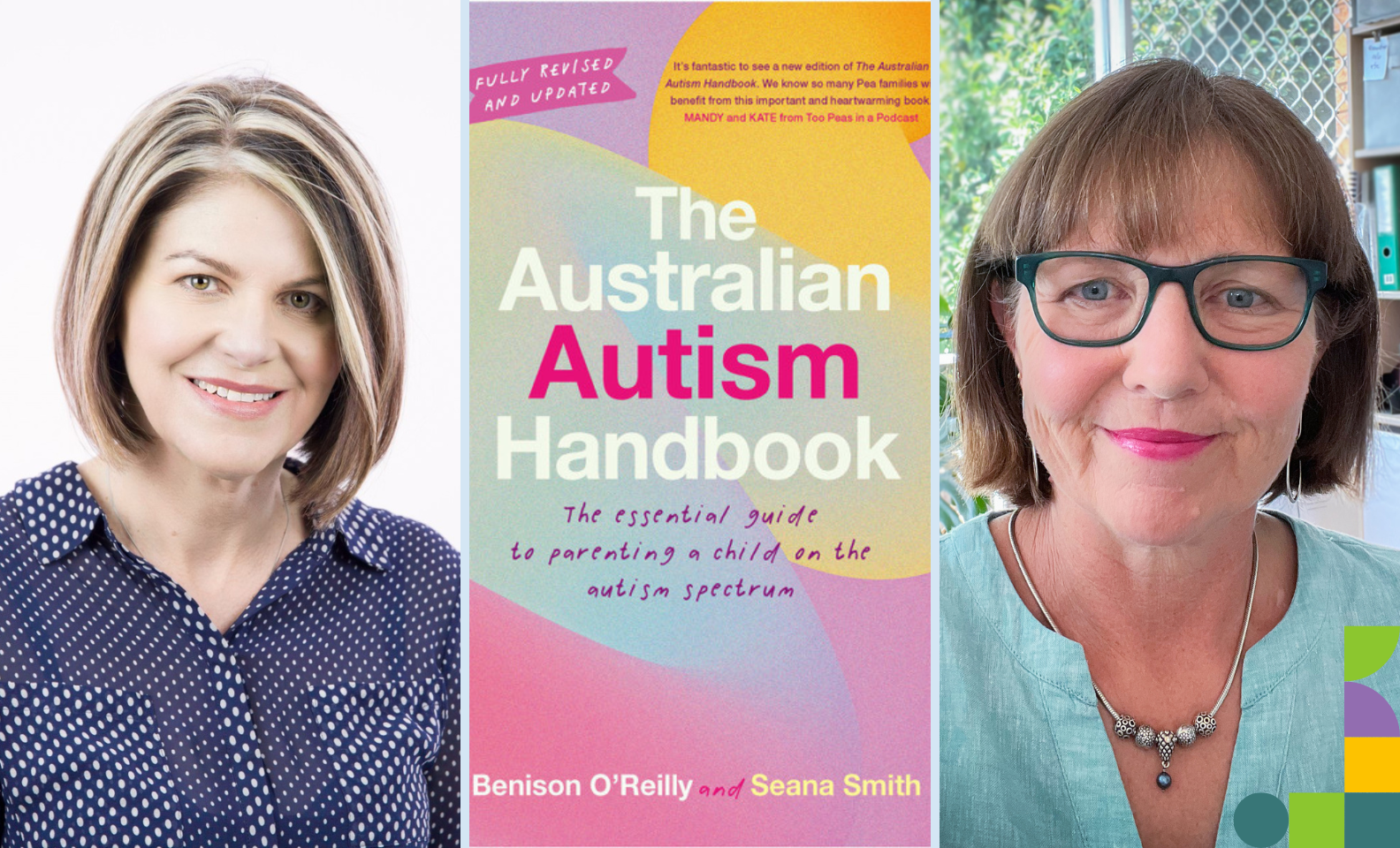Read Differently: The Australian Autism Handbook
As we approach International Autism Awareness Day on April 2nd, it is important to reflect on the experiences of individuals and families affected by autism. To celebrate this day, Maple Community Services interviews Benison O’Reilly and Seana Smith, co-authors of The Australian Autism Handbook.
This comprehensive guide offers insights and practical advice for parents, caregivers, and educators supporting children with autism. During our interview, we discussed the challenges faced by families living with autism, the importance of community support, and the impact that their book has had on the conversation surrounding autism awareness in Australia and beyond. Join us as we delve into their journey and learn from their expertise.
Question 1: Can you tell us about your inspiration for writing the Australian Autism Handbook? What motivated you to write it followed by latest edition?
Seana: We wrote the first edition of the Australian Autism Handbook in 2007 and it was published in 2008. We wrote it then because we knew very well how little reliable and compassionate information was available to families. We had both been shocked and upset by how little we could read about autism in Australia when our own boys were diagnosed. It was a labour of love for other families.
This new edition is the fourth edition and sees a massive rewrite. There is now a lot of information available to families online, however people have to work out the wheat from the chaff on their own all too often. And there is a lot of misinformation online. A lot has changed in the autism world – for the better – and we knew we needed to update the book for today’s families.
For us, this edition is still a labour of love, and not just ours. Around 50 families and professionals also contributed to the book. It is a group effort.
And as to how the two met; it was Seana who had approached Benison back in 2007 to co-write the first edition and little did they know, it would form the start of a wonderful and prosperous relationship.
Benison: Seana and I had got to know each other at an autism parents support group, and she knew I was a professional medical writer, good at translating complex science into understandable language. Naturally I jumped at the chance, as I had learnt the hard way that there were very few decent parent-friendly guidebooks on the market and none that were Australian.
Question 2: What are some of the key messages you hope readers take away from your book?
Seana: For newly diagnosed families, the book aims to be a warm hug and a hand to hold. The key messages are that no-one is alone and although families may feel overwhelmed with all they need to learn at the start of their journey, there are many friends along the way.
We also have the key message that autistic people can give excellent advice and guidance, to help families understand their child and parent them well.
Benison: To approach their child’s diagnosis in a positive but realistic way. That is, not aiming to stamp out the qualities that make their child unique but supporting them to have their best life while embracing their autistic identity.
Question 3: How did you go about researching and writing the Australian Autism Handbook?
Seana: My job is mainly to interview families and to let them give advice and tell their stories – whilst I get out of the way. The greatest joy this time was working with young people with autism and adults too. They have written some fantastic personal stories and advice.
Benison: Being a professional medical writer, I know how to search the medical literature for key guidelines and clinical trials. After reading those, I have to ‘translate’ the information into accessible language. The last step is to send it out to expert reviewers (psychologists, speech therapists etc) for their comments. So, families can be assured that all the technical information in the book is backed up by science and professional expertise.
Question 4: How do you think the book will be received by the autism community in Australia?
Benison: Largely positively, I hope, although I know you can’t please everyone. I know it includes some polarising topics like ABA and positive behaviour support, which some autistic advocates are opposed to, but for completeness they need to be included. Moreover, our positive behaviour support chapter advocates a whole school approach, rather than singling out the autistic child for intervention, a much more inclusive way to approach things.
It is written primarily for the families of newly diagnosed young children, that is the primary audience. We hope they find it a resource to use over many years. It’s also handy for teachers and professionals, and we hope many of them use it for the facts and to gain further understanding of the whole family experience.
Question 5: What challenges did you face in writing the book, and how did you overcome them?
Seana: Time… and having so much to write about and so many things to include. It is a heavy book! We decided to add in sections about some major childhood issues, eating sleeping and toileting and asked some experts to help us. This was a bit last-minute, and we all had to pull hard to get that section into the book, but I am so glad we did.
Question 6: Speaking of your children, can you both share separately your thoughts about their journey and ABA therapy?
Seana: My son is 26 now and works three days a week for a packing and sending company. He is quite independent but also still very dependent on his family for support. He loves heavy metal music and playing the guitar and he also loves boxing which keeps him fit.
I know people have a lot of criticism of ABA and I have heard some young adults from the USA talk about bad experiences. That is awful. For us, ABA was fun, it was play and it helped us all. I was relieved to have people who could help me to teach him, and my son could learn when he was taught the right way – this involved a lot of learning words as he jumped on the trampoline! Video modelling is something we did a lot as I had been a TV producer and loved making videos. They worked like a charm.
Each child is an individual and each child is an individual. A strengths-based and family-centred approach is crucial – at every stage.
Benison: My son is 22 now. He’s level 2 ASD/ADHD and it has not been all smooth sailing, but when I look back to when he was three and the gloomy future, I was told to expect for him, I can honestly say I am pleasantly surprised with how life has turned out for him and the family. Frankly our life is pretty cruisy these days!
As for his ABA program, as I say in the book:
His program hours were equally split between play and learning, and his therapists were caring and respectful. For a hyperactive kid like Sam, the most essential skill he learned in ABA was to sit still and pay attention for several minutes. From there everything else flowed, his progress in speech therapy and OT blossoming as well.

Question 7: Have you come across someone who considered ABA for their children after reading your book and had a very impactful and significance change in their lives?
Benison: Yes, we have. In fact, a couple of those children, who have done very well, write for themselves in the new edition. Which, when you look back at where they have come from, is a massive achievement for them, and a humbling experience for us.
Question 8: How does the Australian Autism Handbook latest edition differ from other books you have written and the ones that are currently available in the market?
Seana: It is comprehensive, and it is Australian. The combination of science and family stories is unique, we believe.
Benison: To be honest, we think our main ‘competition’ these days is from websites like Raising Children and Autism What Next? which are genuinely very good. Some people just like a book to hold, however. Many parents have called it their ‘bible’.
Seana and Benison also co-wrote Beyond the Baby Blues about perinatal depression (PND), with another author. It followed a similar approach to the AAH, combining science and evidence with personal stories. For Benison who never personally experienced PND the experience was very enlightening.
Question 9: Now, a question for you both to answer separately. How can parents better support their children with autism throughout the year?
Seana: By tuning in to the needs and loves of every member of the family and trying to make sure everyone’s needs are met. By finding the joy in the simple, everyday things. Parents do need to prioritise their own mental health and to try to be jolly and happy as much as they can. It helps everyone.
And pets… such a joy for everyone – the more pets the merrier!
Benison: Wow, that’s a hard one. One thing I learnt the hard way is that school is really, really hard for our kids, so if your child is showing signs of being tired and ratty, it may be better to keep them home for a few days, rather than to force them to go when they’re feeling a bit off. They probably won’t learn anything in that state anyway, and there’s a risk they may have a behavioural episode, which may set them back further than a few missed lessons.
For my son’s last year of high school, he only went Monday to Thursday. The school was totally onboard for this.
Question 10: What are some common misconceptions about autism, and how can we work to dispel them?
Benison: A big one is that autistic people lack empathy. As many a parent will tell you, this is unfair and untrue. Although people with autism often struggle with ‘cognitive empathy’ (taking another person’s perspective), they are often extremely attuned to (and affected by) the emotions of people around them.
Question 11: World Autism Awareness Day is coming up on the 2nd of April. Do you have any message you would like to pass on for this awareness day?
Seana: Just that awareness and acceptance and love are what makes the world go round. We need to support the families who need support, and we must not gloss over the huge challenges that many autistic people and their families confront. So, let’s give the right support, and celebrate all the strengths we can too.
Benison: We’re all in this together. Some more outspoken autistic adults seem to see parents as ‘the enemy’ and that makes me sad. We are trying to do the best for our kids and sometimes we will get it wrong, but our hearts are in the right place.
Question 12: What steps can policymakers take to support individuals with autism and their families, and promote inclusivity and diversity in society?
We still think more work needs to be done around schooling. A lot of schools still pay lip service to inclusivity; they say all the right things until something goes wrong and then the autistic child becomes ‘the problem’. It will be interesting to see how things pan out in South Australia, now they have a dedicated Minister and schooling program.
Question 13: Seana, what projects are you currently working on, and what can readers expect from you in the future?
Seana: I am working on non-autism books now, kids’ books and my swimming website, SwimTheWorldTravel. Slow swimming is the best mental health activity!
Also, I have just released a great children’s book which explore Australian Facts, Trivia and Stories. For those looking for a great way to introduce Australian knowledge to their children, or those with disabilities – it’s a great place to start.
Question 14: And over to you Benison, what projects are you currently working on, and what can readers expect from you in the future?
Benison: Right now, I’m writing a consumer guide on arthritis, which is very different topic! However, my GP husband and I are just about to start work on a GP online education program about autism. I’m sure parents will agree having better educated GPs can only help our families.
 It was absolutely fantastic to have this opportunity to interview both Seana and Benison, Authors for the Australian Autism Handbook in the lead up to International Autism Awareness Day. I know we have learnt a lot during this interview, and we hope you all have as well.
It was absolutely fantastic to have this opportunity to interview both Seana and Benison, Authors for the Australian Autism Handbook in the lead up to International Autism Awareness Day. I know we have learnt a lot during this interview, and we hope you all have as well.
If you are interested in picking up a copy of the Australian Autism Handbook, you can do so through the below links:




